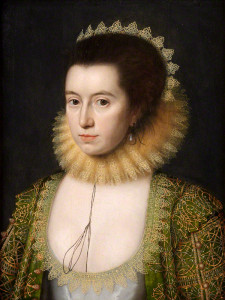
Anne, Countess of Pembroke (Lady Anne Clifford) by William Larkin, oil on panel, circa 1618
This post has kindly been written for us by IHR Digital intern Katherine Cassidy.
As a history undergraduate endeavouring to write my dissertation, Connected Histories has been a vastly useful resource for conducting my primary source research. In short, the website has collated a number of major digital resources regarding documents dating from the early modern to 20th century Britain and put them in one place. These sources include large databases such as the Victoria County History and British Newspapers 1600-1900. For students like me – who may have never conducted historical research to the scope required for a dissertation – it provides a convenient starting point to build up material and knowledge.
My research specifically centres on the autobiographical writing of sixteenth and seventeenth century women and their concepts of self-identity, in the hope that looking at the writing of these women would provide us with greater insight of the perceived role of women in the larger early modern society. Fortunately, Connected Histories has a wealth of resources related to this period. Researching for specific people within a large dataset can sometimes prove difficult, especially when the person is relatively obscure or hasn’t left behind a large volume of records. The search features provided on Connected Histories can help with issues like this through the ability to refine your search in order to narrow your results and find the documents required. This allows you to filter your results by date, source types, resource and access.
However, it is important that when researching through Connected Histories, you bear in mind the type of sources you are looking for, this is particularly crucial when looking for individuals. Take my research of the seventeenth century heiress Lady Anne Clifford as an example; when searching ‘Anne Clifford’ in Connected Histories, most of the results that appear relate directly to the individual I am looking for. However, under the Proceedings of the Old Bailey Online results, a different Anne Clifford is on trial in the Old Bailey accused of grand larceny and ultimately sentenced to seven years transportation. The high born Anne Clifford I am searching for would most certainly not be found in a London court accused of theft, so in this instance it is easy to dismiss the result. However, this shows it is importance to consider the context of these documents to ensure that the subject of the document is actually the right person.
Ultimately, Connected Histories is a fantastic resource for historical research, especially for those with an interest in early modern England. It has certainly provided my own research with new lines of enquiry which I would have previously not considered, such as the VCH’s historic maps and information, which provide greater context of the surroundings in which my subjects lived.
